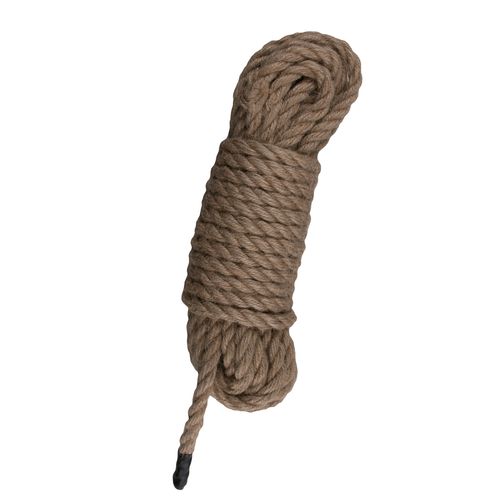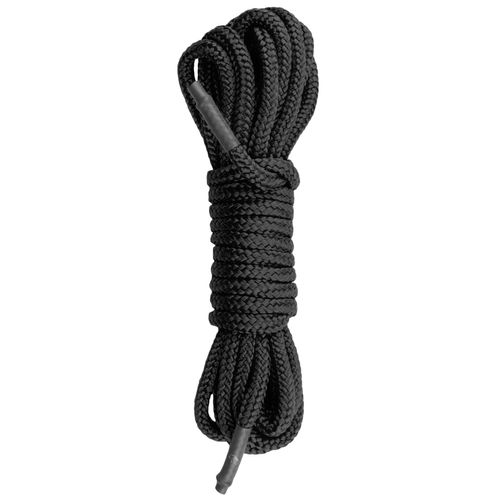Are you and your partner already familiar with Japanese bondage? People in Japan have been practising it for centuries: Shibari. It’s a more detailed and artistic form of bondage. With Shibari, the emphasis is on making complex patterns, which are considered a true art form. In this blog, we tell you all about this Japanese art form!
History of Shibari
Whereas western bondage focuses on tying someone up, Shibari is about creating art or pressure points, which can be pleasurable and relaxing. There are many theories about the origins of Shibari. Many people believe it began in the Sengoku period of Japan, one of the darkest historical periods marked by the use of torture and execution.
Did you know that… Shibari literally means “bondage”?
Others believe that sexual bondage first became popular in Japan in 1908 thanks to Ito Seiu, also known as the “Father of Shibari”. He began researching Hojojutsu. This was a martial arts technique used by the army that involved the use of ropes. Ito Seiu turned it into an art form. Shibari became a popular “performance art” in the 1960s and eventually found its way to England and America.
Read also: Bondage techniques for the bedroom explained
How does Shibari work?
Although some Shibari techniques are based on techniques used by the military, Shibari is a relatively gentle form of bondage. Learning this art form can lead to a deeper sense of trust and a strong bond between you and your partner. However, Shibari requires a lot of dedication, patience, and imagination to make it work. Shibari is based on a number of specific patterns, particularly influenced by the Hojojutsu knots. These involve wrapping a rope in certain patterns around parts of the body and eventually encompassing the whole body. There are different levels of pressure and restraint, depending on which part of the body is being stimulated.
“Shibari involves wrapping bondage ropes around (parts of) the body in specific patterns.”
Shibari is known for its asymmetrical positions to increase the psychological impact, adding a new dimension to the experience compared to other simpler techniques. One of the main ways in which Shibari differs from Western bondage is that it’s not just about restricting movement: by tying the ropes in different ways in different patterns, you can actually stimulate your partner’s genitals, breasts, and erogenous zones. Below, we explain two well-known knots: the Takate Kote and the Ebi.
Read also: An introduction to BDSM
1. Takate Kote
One of the better-known patterns is the Takate Kote, also known as the Arm Box Tie, which forms the basis for many of the Shibari knots and provides a foundation to enwrap the entire body. In the Takate Kote, the arms and breasts are tied, with the arms and hands tied behind the back. In this video you can clearly see how the knot is done.
2. Ebi – Shrimp tie
Another popular knot is the Ebi, also known as the Shrimp, and was originally used as a torture method. It’s one of the most effective ways of depriving someone of freedom of movement. The submissive partner is tied up in a sitting position with their hands behind their back. The neck is then tied to the ankles and – when the knot is tightened – forces the sub to bend the body forward.
Watch out! The Takate Kote in particular requires particular attention and practice. Do not practice Shibari without instruction from an experienced person.
What you need for Shibari / Japanese Bondage
In Japan, Shibari is practised with a seven-metre rope, but anything between five and eight metres is fine. The rope is traditionally made of hemp or jute for a soft but strong sensation, but silk ropes work just as well and prevent friction.
-
 Hemp Bondage Rope 10MEasytoys Fetish Collection
Hemp Bondage Rope 10MEasytoys Fetish Collection€20.99€17.99 -
 Black Bondage Rope - 5mEasytoys Fetish Collection
Black Bondage Rope - 5mEasytoys Fetish Collection€15.99€12.99 -
 Fifty Shades of Grey – Restrain Me Bondage Ropes – 2×5 MetresFifty Shades of Grey€19.99
Fifty Shades of Grey – Restrain Me Bondage Ropes – 2×5 MetresFifty Shades of Grey€19.99 -
 Temptasia - Bondage Rope - 32 Feet - RedTemptasia
Temptasia - Bondage Rope - 32 Feet - RedTemptasia€28.99€14.99
Read also: How do you reach a dom space or sub space?
Which Shibari technique would you like to try? Let us know in the comments!



